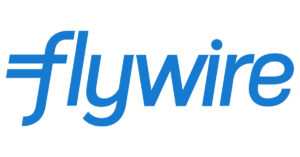
The DFW Hospital Council posts guest blogs by Associate Members. The following was provided by Flywire Health.

Blog by John Talaga, EVP/GM, Flywire Health
To view a webinar on this topic recorded last month, please click here.
NEW RULES OF ENGAGEMENT
Rising healthcare costs and growing patient financial liability are changing the way hospitals get paid as payers punt the financial burden to patients in the form of high-deductible health plans. With those higher deductibles comes higher medical debt. Today, more than half of all debt collections reported to credit agencies is medical debt. It’s also the highest cause of bankruptcy.1
To protect ongoing revenue streams—nearly 30% of which come directly from patients—providers need to reevaluate how they’re engaging with consumers throughout the payment experience.2
WHAT’S WORKING. WHAT’S NOT.
Most hospitals have a variety of patient payment processes in place. Six of the most popular are below. Each of these have benefits but they still fall short of where we could be.
1. Pre-service and point-of-service collections. Collecting payment up front is without a doubt one of the best ways to lower the cost of collections, reduce write-offs, and improve cash flow. Yet some hospitals take this to an extreme, refusing to schedule any services outside of emergency care until existing balances are paid. But this policy may do hospitals more harm than good in regard to value-based care reimbursements. When patients delay or skip needed care, it can negatively impact care plans, compliance, outcomes and revenue.
2. Propensity to pay. Hospitals with propensity analytics can be more proactive in finding alternative methods to help patients pay. Unfortunately, many hospitals just don’t have this type of data, leading them to turn accounts over to charity or collections too soon, which, in essence, leaves money on the table.
3. Patient responsibility estimation. Addressing payment responsibility up front increases pricing transparency and serves as a natural onramp to discussions about prompt-pay discounts or payment plan options. Without this technology, it’s difficult to align estimates to actual payments. This can delay both patient payments and payer reimbursements.
4. Prompt-pay discounts. Hospitals with analytics such as propensity to pay find it easier to incentivize patients with discounts. However, these incentives may violate managed care agreements. Discounts can also devalue services, especially if used too often, and can leave patients wondering if prices were falsely inflated in the first place.
5. Internal payment plans and lines of credit. In most cases, payment plans and lines of credit are only offered after a patient requests them. This approach relies on processes that are only as effective as the capabilities of a hospital’s patient accounting system. Adjusting the plan can be difficult and inexperienced financial advocates may not complete a full evaluation of alternative sources of financing, such as Medicaid, presumptive charity, or other insurance options.
6. Early Out on day one. When turning over self-pay collections to a third party too soon, hospitals miss out on low-hanging fruit. They also lose control of the patient financial experience. It’s impossible to know how an agency is representing the hospital when engaging its patients, many of whom don’t realize the agency isn’t a part of the hospital. Now that patient satisfaction scores are tied to reimbursement, it’s important to ensure each patient interaction is as positive as possible.
THE IDEAL PATIENT PAY EXPERIENCE
While at the 2018 HFMA annual conference, we asked 60 of our session attendees what they thought a perfect self-pay environment would look like (not surprising, having 100% of accounts paid in full was at the top of the list). Here are the key functions they identified:
MEETING PATIENTS ON MUTUAL TERMS
Hospitals and patients alike are challenged with the growing financial pressure of rising costs and increasing patient responsibility. Creating a proactive, responsive payment model based on a patient’s unique financial situation can increase revenue and reduce the cost to collect. Providing patients with 24/7 access to self-service tools improves patient satisfaction and the payment experience, and ensures patients are able to get the care they need when they need it.
It really isn’t that far from where we are to where we need to be. With the right technology and a patient-centered approach, there’s nothing standing in the way.
SOURCES
1 https://www.commonwealthfund.org/publications/newsletter/2016/sep/deductibles-rise-employer-sponsored-health-plans
2 https://www.healthcareitnews.com/news/patients-are-new-payers-healthcare#gs.9pdQqPY